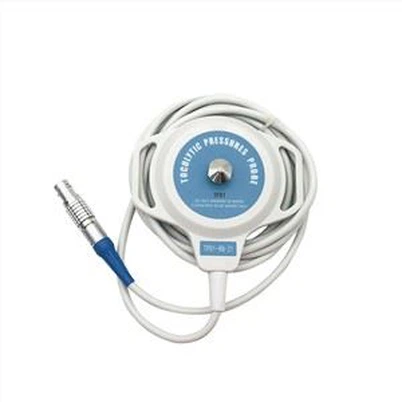Key Points For Selecting Blood Oxygen Probes in Pediatric Clinical Practice
Leave a message
In pediatric clinical practice, common diseases mostly affect the respiratory and digestive systems, such as pneumonia, bronchiolitis, asthma, bronchitis, and dehydration due to diarrhea and vomiting. These diseases are often accompanied by respiratory insufficiency or circulatory disorders, leading to a significantly increased risk of hypoxia. Blood oxygen saturation (SpO₂) is a key physiological parameter for assessing the percentage of oxygenated hemoglobin in the blood. Therefore, continuous and accurate monitoring of a child's blood oxygen saturation (SpO₂) is an important means of assessing their respiratory function and systemic oxygenation status.
Children, especially infants and young children, have incompletely developed respiratory centers and lung function, and their compensatory abilities are poor. The disease often progresses more rapidly and insidiously than in adults. However, in the early stages of hypoxia, children may only show signs of irritability, lethargy, or drowsiness, lacking typical symptoms, making them easily overlooked by parents and even medical staff. Therefore, relying solely on clinical observation can easily delay treatment. The blood oxygen sensor, as the signal acquisition component of the pulse oximeter, utilizes the principle of photoelectric sensing to achieve continuous, real-time monitoring of blood oxygen saturation, providing an objective and quantitative basis for early identification, assessment, and intervention of the disease. In neonatal wards, especially, blood oxygen monitoring has become a standard of care for all critically ill infants or those suffering from respiratory diseases, greatly improving medical safety and treatment outcomes.
Because children differ significantly from adults in physiology, behavioral characteristics, and disease progression, the selection and use of blood oxygen sensors requires special consideration for their suitability and safety.
First, children's sensory systems are still developing, and they often exhibit active and hyperactive behaviors. Blood oxygen sensors can easily shift or become dislodged due to the child's movements, resulting in signal interruption or inaccurate readings. Therefore, blood oxygen sensors must possess excellent anti-interference capabilities. Umai products utilize optimized signal algorithms to maintain stable data even with a certain degree of physical activity. Furthermore, strap-on and adhesive blood oxygen sensors for newborns significantly reduce the risk of dislodgment.

Secondly, children's fingers, toes, and ears are much smaller than adults'. If the blood oxygen sensor is too large, it can easily become loose and fall off, affecting measurement data. If it is too small, it may squeeze the affected area, affecting blood circulation and even causing pressure sores. An ideal product should have a comprehensive size system. Umai's blood oxygen sensor types are carefully categorized, and pediatric applications include children, infants, and newborns. A variety of sizes are available to accommodate different age groups and body types.
Furthermore, infants and young children have a thin stratum corneum and a weak barrier function, making them susceptible to irritation or allergies. Furthermore, infants are often in their oral stage and may inadvertently chew on the probe cable or sensor, so the materials must meet biocompatibility standards. Umai's blood oxygen sensor uses medical-grade hypoallergenic materials and has passed multiple international safety certifications. This ensures accurate and stable data while also being soft and skin-friendly.
Blood oxygen monitoring is a crucial component of pediatric care, and choosing the right blood oxygen sensor is crucial for effective monitoring. Due to the unique characteristics and sensitivity of children, blood oxygen sensors must meet specific requirements in terms of size, material, stability, and safety. If you have any questions about blood oxygen sensors, please visit our product center for more information. Unimed Medical will continue to provide more intelligent, comfortable, and reliable blood oxygen sensors, providing a stronger foundation for children's health.







